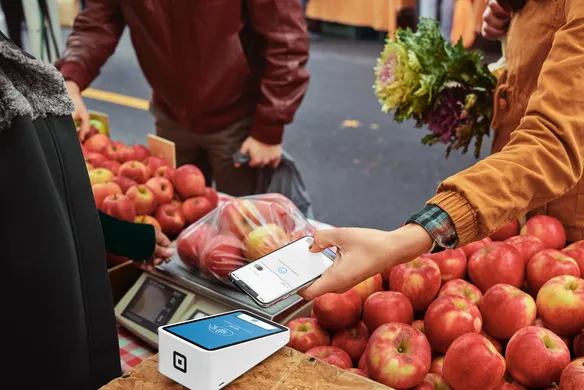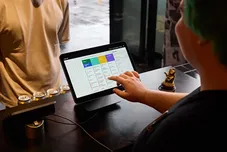Table of contents
What are digital payments?
Digital payments are processed through digital means, rather than using a transfer of cash. In an increasingly cashless society, digital payments are the new norm, and they take place every single day all around the world. Essentially, the term refers to any payment made through digital means, and while relatively simple to the consumer, plenty of activity goes on in the background. This is because security is paramount when transferring payment digitally.
Digital payments, despite the security encryption that goes on behind the scenes, occur in real-time, which makes them perfect for functions such as online shopping.
Benefits of digital payments
Digital payments remove many of the barriers we’ve previously experienced, especially in terms of global funds transfers. Even if you run a local business, you may have dealings with overseas vendors or suppliers, and digital payments make it easier for the whole world to be connected.
1. Speed of transfer
Even traditional bank transfers to someone living in the same home as you can take 2-3 days. Digital payments, on the other hand, occur in real-time.
2. Security
Payment technology is a wonderful thing, allowing us to do more in a convenient online setting, however with advancements in technology comes a rise in people looking to exploit that technology. Digital payments use end-to-end security, including encryption and the fact that you don’t even need to know or enter in a recipient’s bank details.
3. Global payments
Currency exchange has always been an issue for businesses that have overseas dealings. For example, imagine sending a cheque for an overseas purchase. The exchange rate could change drastically before your local currency reaches your overseas supplier. Modern digital payment methods take care of currency exchange instantly, meaning businesses get paid the right amount in their local currency at the click of a button.
4. Decreased costs
If you’ve ever made wire transfer payments before, you’ll know it can be costly, even before you worry about the currency conversion. Digital payments are a low-cost alternative.
How do digital payments work?
Digital payments vary depending on the provider. For the casual user, you may not even see a lot of the inner workings of a digital payment. For example, entering your credit card details in an eCommerce store. You don’t see the technical side of things, you just receive a confirmation that your payment has been processed.
This is because digital payment providers use different networks to access payment rails, which are the types of processing modes. These rails include credit cards, the SWIFT network, blockchain and bank accounts to name a few. When you make an online purchase, the eCommerce website already has a payment provider that handles the processing.
Types of digital payments
As technology improves throughout the business world, we are seeing more digital payment types occurring. The push for heightened security, faster transfers, lower fees and more convenience means that digital payment trends are rising each and every year. Let’s take a look at some of the most popular digital payment types.
1. Mobile POS
Mobile POS, or mPOS, is all about convenience. This digital payment type allows businesses more flexibility in the way they accept payments. Take, for example, Square’s credit card reader. It essentially turns a smartphone, tablet or other device into a cash register, meaning you can do business on the move.
Businesses can now make their operations mobile, for example, attending trade shows and festivals. You’re no longer tied to your brick-and-mortar store because you can take a mobile POS system with you. In addition, you can even provide a better service in-store, removing the need for a central checkout point. For example, restaurant staff could bring a card reader to your table, allowing you to pay without leaving your seat.
2. Contactless payment
One of the biggest and most essential advancements we’ve seen in the world of digital payments is going contactless. The technology was quite common before the COVID-19 pandemic, and it was all about convenience. Now, however, people want contactless options for health and safety reasons.
Contactless payments are quite similar to normal card payments, but rather than inserting or swiping a card and entering a pin, you simply tap or wave a card over the reader. You can also do this with mobile apps like Apple Pay, Google Pay or banking apps that operate on NFC (near field communication) technology.
3. Social media payment
There is an increasing impetus on business to make life easier for customers. The old marketing saying about meeting your customers where they already are has never been truer when it comes to social media. However, advertising products on social networks and expecting customers to click through to various other websites is no longer good enough.
That’s why businesses include digital payment methods within their social media sites. So, you can now sell directly to customers on Facebook, Instagram and other networks using digital payment methods.
4. QR codes
We’ve seen a lot about QR codes in recent times, especially with check-in requirements during the COVID-19 pandemic. But the QR code technology has been around for a while and is also used as a digital payment method. Businesses can quickly generate a QR code for each sale, allowing users to simply scan it with a mobile phone camera. This then creates a push notification on the phone, allowing the customer to pay using a digital wallet with the tap of a button. It’s secure, fast and convenient.
5. Biometric authentication
If you want maximum protection for a digital payment method, biometric authentication is a great step forward. Identity theft and fraud are always on the rise, so security measures need to stay one step ahead.
If you use a digital wallet like Apple Pay or Google Pay, you need to use verification methods such as fingerprint scanners or facial recognition before making a transaction. Visa is also trialling this technology on physical cards. The cards include a fingerprint sensor that needs to be verified before the card can be used.
Digital payment trends
Now that we’ve discussed the main types of digital payments, what does it all mean for the future of business? We’ve already seen businesses identifying the need for more payment options, which is why products like Square Payments are so popular. It offers a multitude of ways that a business can accept payments online, in-person, over the phone and more.
Whether you’re starting a new business, or you run an existing business that needs to keep up with new technology, it’s important to know the trends. As with all technology, it’s also imperative you can identify the fads from the real game-changers. So, here are some of the biggest digital payment trends we’re seeing right now.
1. The rise of contactless payments
It’s probably an obvious one, but contactless payments are huge right now, and their popularity shows no signs of slowing down. With heightened awareness of viruses and hygiene in general, customers no longer want to be handling EFTPOS readers and touching keypads that hundreds of other people have already touched. So, the ability to wave a bank card over a card reader is a much more appealing option.
Most smartphones now also have contactless digital payments built-in, such as Apple Pay, Google Pay and Samsung Pay. You simply add a card to the digital wallet, and you can wave the phone over the card reader. The great thing for a business is that these digital payment methods use NFC technology, which most card readers already recognise. So, you can offer this payment method without any system upgrade.
2. Mobile POS technology is changing the face of business
As far as convenience goes, mobile POS systems are at the top of the tree. The business world is changing. Imagine you operate a restaurant, but your clunky old cash register is practically bolted to the front counter. This eliminates any opportunity to take your business mobile. When local festivals, concerts or community gatherings take place, it’s extremely complicated to set up a stall and accept digital payments.
With mobile POS, however, you can accept card and digital wallet payments wherever you go. Retail is also bound to be impacted because mobile POS eliminates the need for a central checkout point. You can streamline the process, helping customers check out while reducing lines.
3. A focus on security
The biggest concern for most people who want to use digital payments is security. Customers need confidence that their personal and banking details are safe. It’s one of the reasons that another digital payment method – that of transferring funds using smart speakers – has yet to take off as wildly as its creators may have hoped. Voice recognition still comes with a level of inaccuracy that customers don’t associate with safe banking transactions.
So, as technology advances, people will be choosing the safest payment methods possible. To that end, you can expect a further rise in the use of biometric verification, digital wallets and other more secure methods of fund transfer.
![]()











